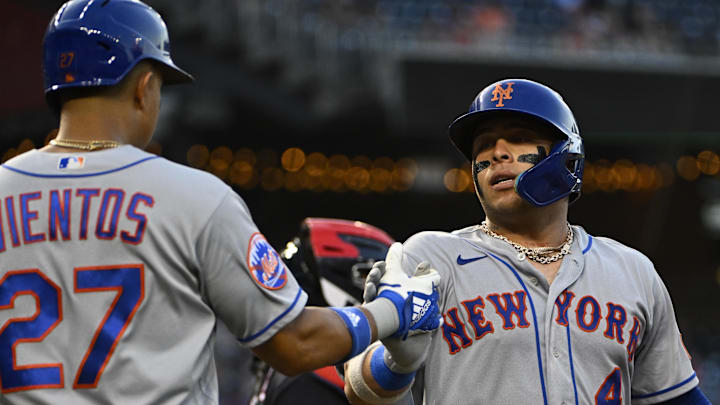The Braves made it look easy. Draft well, develop fast, and hand out long-term deals before the ink dries on a rookie season. It’s the blueprint every team wants to steal until they flip through their roster and realize the pieces don’t quite fit. The New York Mets aren’t short on young talent. They’re just short on reasons to commit. A power surge here, a promising stretch there, but nothing that screams eight years, locked and loaded. It’s not that the Braves cracked some secret code. It’s that their kids made the decision easy. In Queens, things are still a little murky.
The Braves locked down their young stars early; the NY Mets haven’t found enough reasons to do the same.
Mark Vientos, Brett Baty, Francisco Álvarez, Ronny Mauricio, and Luisangel Acuña make up the Mets’ young core, a group that’s flashed enough promise to keep fans intrigued, but not enough to inspire early extensions. Vientos slugged 27 homers in 2024, posted a .837 OPS, and delivered several big postseason hits. Álvarez launched 25 home runs during his rookie campaign and looked like a long-term answer behind the plate. Baty’s lefty bat still hints at more to come, Mauricio’s athleticism plays all over the infield, and Acuña has the speed and instincts to become a spark plug at the top of the lineup.
But flashes don’t equal foundation. Vientos hasn’t come close to replicating last season’s production. Álvarez has struggled to stay healthy and consistent. Baty and Mauricio remain a work in progress, and Acuña has yet to prove he’s more than a name on the depth chart. None of them have stacked together the kind of seasons that typically earn long-term trust or extensions. There’s raw talent here, but it hasn’t turned into sustained results. And until that happens, the conversation around locking them up early remains more theoretical than practical.
The Braves didn’t wait for perfection. They handed out early extensions to Michael Harris II, Austin Riley, Ronald Acuña Jr., Ozzie Albies, and Spencer Strider, often the year after a breakout rookie season. Whether slugging, fielding, or striking out the side, those players showed early they belonged. Atlanta didn’t just bet on the upside; it locked it in, securing each player through arbitration and into free agency at below-market prices. That strategy now stabilizes a payroll ranked eighth in MLB at $210 million and gives the Braves a controllable, high-impact young core to build around.
The Amazins', on the other hand, are built differently. Their core is anchored by Francisco Lindor, Juan Soto, and for now, Pete Alonso. It’s a foundation built on proven stars, not pre-arbitration upside. And unless one of the younger players proves they can sustain the impact, the front office has little reason to borrow from the Braves’ playbook.
Right now, there’s simply no one on the Mets’ young roster who’s earned the kind of commitment the Braves handed out. Not one has shown enough to justify locking in years of control or gambling on a discount. The idea sounds great, build a core early and save later, but that only works when the talent demands it. For now, the Mets’ future investments remain with the stars at the top, not the prospects still trying to break through.
